One of the real breakout comics of 2013 was Bandette, from the husband and wife team Colleen Coover and Paul Tobin. A digital comic that is creator-owned and sold by Monkeybrain for only 99¢, the tale of young Parisian cat-thief Bandette and her team of accessories has been a hit both creatively and commercially. Awarded the Eisner Award for best digital comic, while nominated in three other categories, Bandette is a great example of the digital first/print second phenomenon in comics, with the first five issues released in hardback form by Dark Horse last November. Coover and Tobin, both of whom have long and esteemed resumes in comics where very kind to submit to an interview from me, to catch up on how things have gone for them and the title since the big Eisner win at Comic-Con in San Diego.
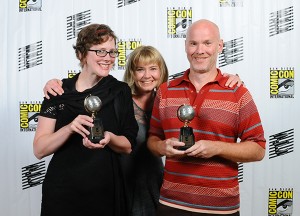
BRUCE: I got to speak with you guys in San Diego the day before the Eisners. How did it feel to win for Bandette, and has the award changed how people perceive you and your work? Did it have a noticeable effect on Bandette sales?
PAUL: It felt strange to win an Eisner. There was a moment after the announcement when I just froze in confusion, and then I apparently teleported up onto the stage, and it really wasn’t until I was looking at Colleen that I understood we had won. Luckily, even while still on stage I was able to reflect how wonderful, and how rare, it is to be holding an Eisner in my hands, and watching my wife accept an Eisner as well. And it’s definitely heightened awareness (and sales) of my other works, and of course Bandette itself. It’s just great that of the four nominations, we won the first one announced, because that allowed us to be truly happy for our friends when they won. Our friend Chris Samnee winning best artist over Colleen? No problem, because we already have an Eisner on the table!
COLLEEN: The euphoria really was heady. The only drawback, if it can be called a drawback, is that since winning the award, I’ve felt an added sense of responsibility about making Bandette even more awesome. It’s like, “Okay, you’ve given us this thing and we like it, here’s your reward. Now what else have you got?” I should say that this sort of inner dialog is all part of the necessary balance between swagger and self-doubt every creative professional must have in order to keep motivated.
BRUCE. You guys are such a great example of the digital first-print second phenomenon with the release of the Bandette hardcover in November. How has that experience been? Are you happy with the reception of the hardcover, critically and commercially?
PAUL: Definitely happy. We chose Dark Horse because they’d done such a fantastic job on the Bucko hardcover by our friends Erika Moen and Jeff Parker, and they did an equally great job with Bandette. We wanted to make sure it looked like something that belonged on a shelf, or on display.
COLLEEN: Yeah, also, Dark Horse made it really clear that they wanted to be the print publisher for Bandette, and that they would work with us to make sure that it not only looked great, but came in at an affordable price point. I don’t know what the sales numbers are, but we hear from people every week who have picked up Bandette and love it!
BRUCE. While I’m sure there is no way to know with certainly, but what is your impression of the hardcover purchasers? Are they primarily the same audience as the digital purchasers, but now looking to own a tangible artifact? Or is it a whole new audience that was not interested in the comics as digital purchases?
PAUL: Both. We’ve had plenty of readers contact us and say that they loved the digital comic so much that they were thrilled to have a hardcover, and then there were others who wrote to say how happy they were to have the hardcover, because reading comics digitally either didn’t appeal to them or that they just didn’t have access. I think it was the right way to go for us; it’s not even a “best of both worlds” situation, because it’s “both worlds” straight up.
BRUCE: What have you guys learned from the hardcover experience so far? Is there anything you might do differently next time?
COLLEEN: Fortunately, Dark Horse has so much experience publishing good-looking books, all we had to do was sit back and make approvals. They were even able to accommodate a totally last-minute change I wanted to make to the frontispiece when I suddenly got the idea to put in a “This book belongs to…” bookplate.
PAUL: Really… we were quite happy. Sometimes the best thing to do is to relinquish a bit of control and let things happen. Of course, you can guide the process, and we certainly did that, because it still needs to feel like it’s “yours” at every step of the process.
BRUCE: Top Shelf just announced a program by which purchasers of select print titles can also get the digital version for a heavily discounted price. Is that something you might offer, or would it be too complicated with two different publishers, Monkeybrain and Dark Horse?
PAUL: Individual issues of Bandette are already only 99 cents, so I think that’s pretty cheap!
COLLEEN: And yeah, it would be difficult contractually, since Monkeybrain holds exclusive digital rights and Dark Horse has the print rights. I do think it’s a very good business model to include ebooks with the sale of print titles.
BRUCE: Are there plans for a paperback version? Do you have a longer term plan to release print versions for every 5 individual Bandettes? Are you contracted to return to Dark Horse for future print releases or can you make new partnerships on a book by book basis?
PAUL: We’ve talked about a paperback version, but it’s not something we think it heavily needed. We worked really hard to produce not only a great looking hardcover, but to keep the price VERY low, so it’s a 144 page hardcover for only $14.99, so a paperback isn’t a pressing need. There will be more hardcovers up-coming, but I’m not sure exactly how many issues will be in each one. Storylines will help determine that.
BRUCE: What kinds of things did you specifically do to keep costs down? Do you have advice for other creators looking to convert digital properties to print?
COLLEEN: That’s all secret Dark Horse economic jujitsu at work: Paper stock, book size, number of colors used to print certain pages– every little bit you can save without making it look like you’ve held something back adds up.
BRUCE: The hardcover is beautifully printed, and the colors especially pop out from the page. Has the experience of seeing Bandette in print changed anything in your approach to the digital production? Are you still wedded to the three panel page layout that you’ve done so far with Bandette?
PAUL: We love the three tier approach to comics, at least for this project, because it’s not only handy for digital, but also an homage to the comics we’re emulating to a certain degree… Tintin, for instance. And, it has such a clarity that I think it lends itself well to the stories.
COLLEEN: It ain’t broke, so I’m not looking to fix anything!
BRUCE: I really enjoyed Colleen’s work on Batman ’66. How did it feel to work with Jeff Parker as writer after having done so much work with Paul? Did you enjoy the experience of creating art for the Guided View style of digital comic, as you previously told me it would not work with Bandette? Did it change your mind on that?
PAUL: This question is not about me, and is therefore invalid.
COLLEEN: I’ve worked more with Parker than with anyone other than Paul, back when we were doing stuff for X-Men: First Class, so it was a very familiar place to be. We work together in a totally different way from the way Paul and I work: Paul will present me with a complete script, and then he steps back and I draw it. With Parker, we’ll spend time hanging around in the studio, talking about old comics, and ideas for the story he’s going to write for me come out of that. When Jeff found out he was getting the Batman ’66 job, we spent hours reminiscing about watching the TV show when we were kids in the 70s. A lot of the stories he’s written springboard directly off those conversations.
As for the enhanced view, Jonathan Case, who was the first artist on Batman ’66, and is also in our studio, did a lot of the legwork on figuring out how to make it happen without driving himself crazy, and I picked up some tips from him. For starters, we both drew our stories digitally, so that the little changes that happen in each panel match up precisely. The kicker is that no matter what additional “action” we put in the story for the digital product, there has to be a final printable version that makes sense when they publish the story in the comic. It’s a real storytelling challenge, and it was a ton of fun!
BRUCE: In San Diego you told me that a Pixar version of Bandette would be a dream come true. Have had any more thoughts or approaches to put Bandette in other media? I believe there are Bandette T-shirts for sale, but merchandise could be a way to further monetize your digital property, I imagine?
PAUL: So far we’ve done very little on the merchandising front, mostly because we haven’t had time to set everything up, but we do have some thoughts about Bandette in other media. I guess, for right now, we’re just trying to really get our own feet on the ground and establish Bandette, before we start looking to expand.
COLLEEN: Yeah, I set up some tees and mugs and phone cases on Café Press and on Zazzle, which is about the bare minimum of effort you can make to provide mech. Merchandizing is a lot of work, and requires monetary investment, so we’re going to wait and see what opportunities come up from people who do that sort of thing for a living, rather than try to do it ourselves. I’m still very open to Pixar doing a Bandette film. Or really, any other studio.
BRUCE: I know Paul has the new Prometheus comic scheduled for release in June. I would assume Dark Horse is kind of feeling the heat in regards to licensed properties now that Star Wars is no longer theirs. How has the experience been so far? It must take quite a change of mental pace to go imaginatively from Bandette‘s whimsical Paris to the rather grim planet LV-223! And that is not a cross-over I would want to see! ;)
PAUL: It’s going to be later than June, because we want to match some things up, but… yeah, it’s been a blast. I’m working with three other local writers on the project, each with our own book. There’s me on the lead title, Prometheus, and then Chris Roberson on Aliens, and Josh Williamson on Predator, and Chris Sebela on Aliens vs. Predator. It’s great because we’re all local, and all friends, so we can get together a lot, talk about the project and eat cake. As far as the change of mental pace between projects, I’m really all over as a general rule. I just finished an Adventure Time series, a Plants vs. Zombies project, a whole bunch of writing for Angry Birds, and of course Bandette, and that’s all fairly light-hearted material. At the same time, I’m working on my Colder horror series, and Prometheus, and the Witcher comics for Dark Horse… all much darker. My upcoming novels are much the same: you’ll see some humor titles, and then some darker material. I actually find it easier to work in several areas. It keeps my brain bouncing, moving from one project to the next, so that I don’t grow stale and predictable.
BRUCE: Do you have a philosophy or even rule of thumb that you use to guide what projects you take on, specifically in the realm of balancing personal/independent projects with more commercial properties? Does the success of Bandette allow you more freedom in pursuing your projects?
COLLEEN: Last spring, right as I was finishing up Bandette #5, I had two short projects I had committed to previously come due. Once those were done, I was going to get right back to Bandette, but then the Batman ’66 gig came available. Any other project, I would have turned down, but the Batman TV show was just too big a part of my early life to pass on that opportunity. As a result, there was rather a long wait for Bandette #6. Now, I’m focusing entirely on Bandette. No other projects are being considered.
BRUCE: And one more question, with Bandette #6 out, when can we expect #7? Are you guys hoping to maintain a consistent schedule of issues in 2014? And the Urchin stories have been so fun, with #9 now available from the Monkeybrain site. Any artist names of future Urchin stories you want to tease your readers with?
COLLEEN: Bandette #7 is about a week from being colored and finished now, at the end of February, and then it takes several weeks for Comixology to get it ready to go live. As for our schedule, we will continue to put out issues as quickly as I can draw them!
Urchin artists of the future include but are not limited to: Sheli Hay, Ron Chan, Dylan Meconis, Ron Randall, Cat Farris, Emi Lenox, Steve Lieber, and Juan Ferreyra.
Bruce: Thanks very much!


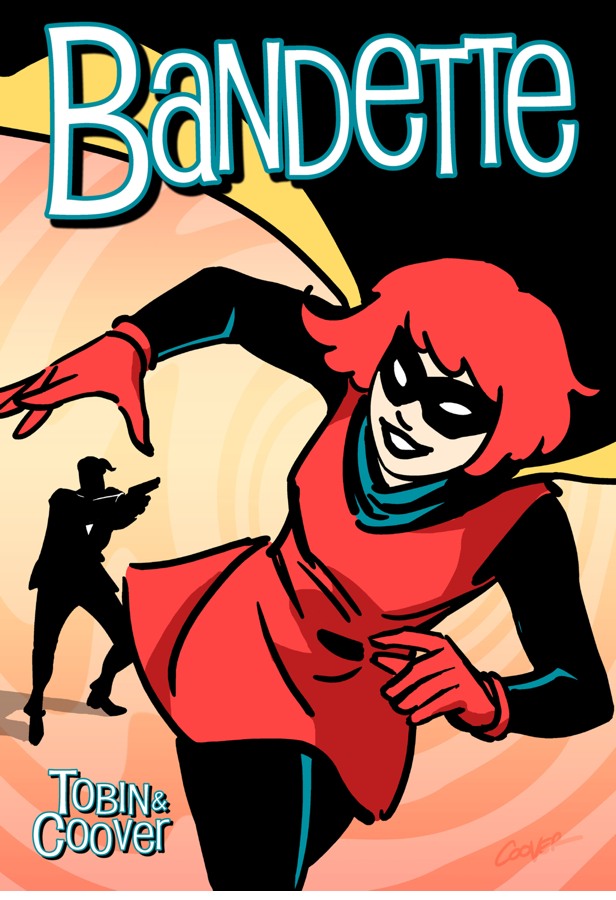
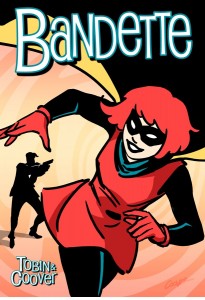

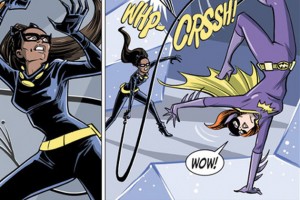
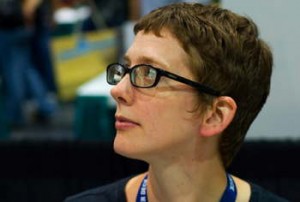
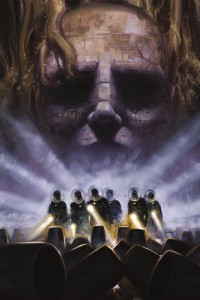
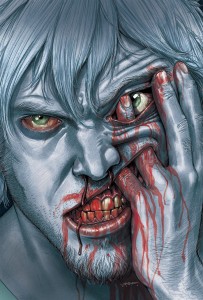


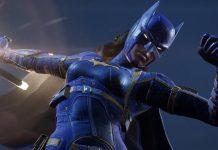



Great interview! It is interesting to see how the digital-print relationship is evolving along with the readers. Keep up the terrific work, Colleen and Paul, and best wishes!
Comments are closed.